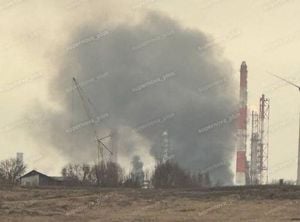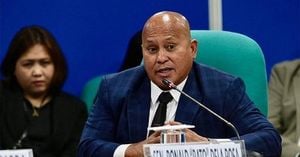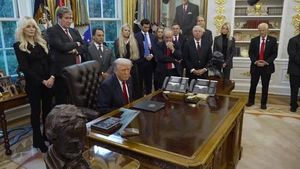Across the United States, a wave of concern is rippling through the federal judiciary over the Supreme Court’s increasing reliance on brief, opaque emergency orders—decisions that have had sweeping effects on major Trump administration policies. According to The New York Times, more than three dozen federal judges have spoken out, many under the shield of anonymity, describing the Supreme Court’s approach as “mystical,” “overly blunt,” and “incredibly demoralizing and troubling.” Some even likened their current relationship with the nation’s highest court to a “war zone,” with one judge bluntly calling the situation a “judicial crisis.”
This rare and candid critique comes from a broad cross-section of the judiciary. Out of 65 judges who responded to a questionnaire sent to hundreds nationwide, 47 said the Supreme Court had mishandled its emergency docket since President Trump’s return to office. These emergency orders—sometimes decided in a matter of hours—have allowed the Trump administration to deport tens of thousands of people, discharge transgender military service members, fire thousands of government workers, and slash federal spending. The orders, technically temporary, have nonetheless had immediate and lasting practical impacts.
What’s especially striking is the bipartisan nature of the concern. Of the judges who responded, 28 were nominated by Republican presidents (including 10 by Mr. Trump himself), and 37 were nominated by Democrats. While Democratic appointees tended to be more critical, judges from both political backgrounds expressed unease. In interviews, many described the Supreme Court’s emergency orders as leaving them “in limbo.” Judge James A. Wynn Jr. of the U.S. Court of Appeals for the Fourth Circuit summed up the sentiment at a September hearing, saying his court was “out here flailing” as it tried to interpret the Supreme Court’s vague directives.
Judge Allison D. Burroughs of the U.S. District Court for the District of Massachusetts echoed the frustration, observing that the emergency orders “have not been models of clarity.” In about 20 cases involving Trump administration policies, the Supreme Court has issued emergency orders—at least seven of which offered no reasoning at all. This lack of explanation has left lower court judges struggling to discern the justices’ thinking and to apply the rulings consistently.
The Supreme Court, for its part, has defended the brevity and opacity of its emergency orders. Justices have argued that providing extensive reasoning could prematurely lock the Court into a position that might not reflect its final view. Yet, as The New York Times notes, the lack of clarity has had real consequences for the judiciary’s image. Forty-two judges said the emergency orders had caused “some” or “major” harm to the public’s perception of the courts. Even among Republican-nominated judges, nearly half believed the orders had damaged the judiciary’s standing.
J. Michael Luttig, a former federal judge and critic of the Trump administration’s constitutional interpretation, called the judges’ willingness to speak out “of surpassing historic significance.” He emphasized that federal judges are bound by a code of conduct requiring them to promote public confidence in the judiciary’s integrity and impartiality—making their public critique of the Supreme Court all the more extraordinary.
Some judges went further, characterizing the Supreme Court’s emergency docket as a “shadow docket”—a term used by critics to describe the Court’s growing reliance on these quick-turn, minimally explained decisions. The rise of the shadow docket has coincided with the Supreme Court’s consistent siding with the Trump administration in emergency applications, often overturning lower court rulings that blocked or limited expansive executive actions.
For Trump’s allies, the lower courts are seen as overstepping their authority by blocking presidential actions—an argument that one Trump-appointed judge echoed, praising the Supreme Court for “flushing out anti-democratic rulings” with its emergency orders. But the main complaint from most judges wasn’t the substance of the decisions, but the process: the Supreme Court’s habit of issuing orders in a few sentences, with little or no reasoning, forces lower courts to “read their minds about what their view of the law is,” as one judge put it.
The tension reached a public flashpoint in August 2025, when Justices Neil M. Gorsuch and Brett Kavanaugh admonished Judge William G. Young of the U.S. District Court for the District of Massachusetts for allegedly failing to apply an emergency Supreme Court ruling in a related case. The justices wrote, “Lower court judges may sometimes disagree with this court’s decisions, but they are never free to defy them.” Judge Young, an 85-year-old Reagan appointee and Army veteran, issued a rare apology from the bench, admitting bewilderment at the Court’s lack of clarity but insisting he had never intended to defy precedent. Retired judge Jeremy Fogel commented, “For a guy like that to get bench-slapped for not reading the tea leaves properly? That’s just not fair.”
Some legal scholars, like Nancy Gertner of Harvard Law School, see the Supreme Court’s approach as undermining respect for the judiciary. She argued that Justice Gorsuch’s public criticism of Judge Young risked echoing President Trump’s rhetorical attacks on judges, fostering “an atmosphere of disrespect.”
Responses to the questionnaire weren’t universally negative. Twenty-one judges either declined to comment or said emergency orders had little or no effect on public perception. Others, like Judge J. Harvie Wilkinson III of the Fourth Circuit, acknowledged the Supreme Court was dealing with an unprecedented volume of emergency challenges from a presidency determined to press its agenda. While he saw value in the emergency docket for managing this caseload, he cautioned against “too many snap judgments and emergency orders creating a public impression of either secretiveness or arbitrariness.”
Meanwhile, lower court judges continue to grapple with contentious cases arising from Trump administration policies. On October 10, 2025, a Trump-appointed judge in Oregon declared President Trump’s decision to send the National Guard to Portland “simply untethered to the facts.” In Tennessee, an Obama-appointed judge ruled that Kilmar Abrego García had presented sufficient evidence to pursue a rare claim of “vindictive prosecution.” And on October 9, 2025, Judge April M. Perry in Chicago, a Biden appointee, observed a “lack of credibility” from the Department of Homeland Security.
These recent rulings underscore the diversity of opinion and independence still present in the federal judiciary, even as the Supreme Court’s emergency orders sow confusion and, in the eyes of many, erode public trust. The unprecedented willingness of so many judges to speak out signals the depth of concern within the judiciary—and a growing sense that the Supreme Court’s shadow docket is reshaping the landscape of American law in real time.
As the courts continue to wrestle with high-stakes disputes and the public watches closely, the debate over the Supreme Court’s emergency powers is far from settled. For now, the judiciary finds itself navigating uncharted territory, with the rule of law—and public confidence in it—hanging in the balance.



